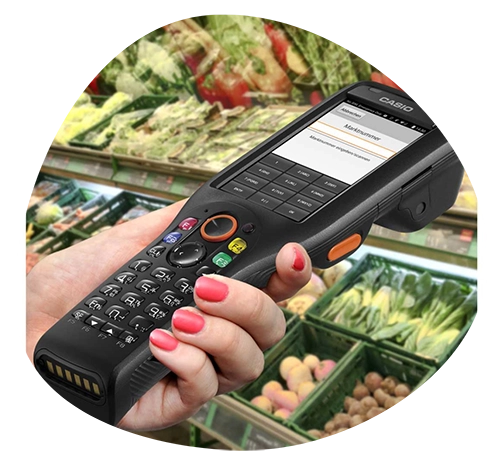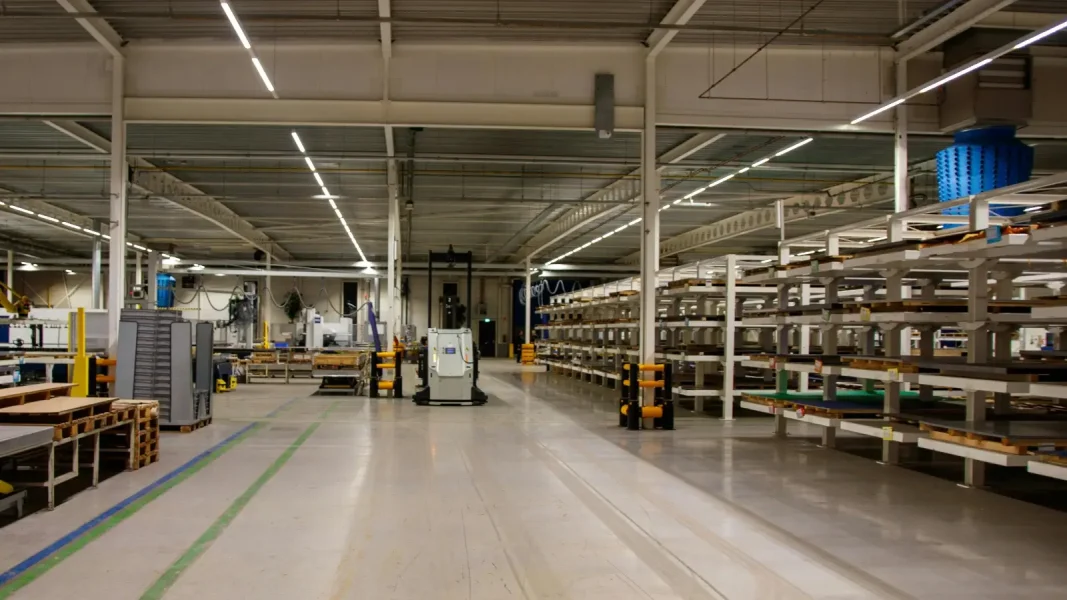In a market where consumers compare prices with a single click and promotional volatility has become the norm, retailers no longer have a choice: they must manage their prices with surgical precision.
This article explores why and how this approach is fundamentally reshaping pricing strategies in the retail industry.
What Is a Price Data Collect?
A price data collect is the process of collecting, recording, and comparing the prices of products or services offered at different points of sale or by competitors.
This method of price monitoring is widely used in sectors such as retail, mass distribution, e-commerce, and brick-and-mortar stores, with the goal of monitoring competitive positioning.
Why Field Data Is Becoming Essential for Price Optimisation in Retail ?
Today, data is the core asset of any high-performing pricing strategy. While web data crawling — the automated extraction of online information — has transformed competitive intelligence, it is no longer sufficient to cover the full scope of the market. Many products, particularly in fresh food, private labels, or fast-moving consumer goods, are not visible online.
This is where in-store price data collect — or Scan In Store — becomes indispensable. It consists of collecting competitive data directly in-store, at the shelf level, through a mobile application used by trained field agents.
This approach provides a real, contextualized, and up-to-date view of the competitive landscape, enabling more agile, precise, and responsive pricing decisions. It complements digital data by anchoring it in the physical retail reality — where a significant part of the purchasing decision is made, right in front of the shelf.
At REMA 1000, for example, a field agent can collect data on over 5,000 products in under three hours, or nearly 50 products in less than 10 minutes — in contexts where prices can change every 15 minutes. This level of responsiveness provides a decisive advantage for retailers aiming to make real-time pricing adjustments based on local market dynamics.
Technology Behind In-Store Price Data Collect: The Mobile Solution
A Data Collect System Built for Shelf-Level Observation
In-store price data collect relies on a mobile solution designed for simplicity, speed, and reliability. Available on Android devices — particularly professional PDAs like Zebra terminals — the app is used by trained field agents: whether dedicated staff, students, temp workers, or supermarket associates.
Each mission is centrally prepared: the products to be collected, the targeted stores, data collection objectives, and execution guidelines (category, frequency, types of information) are all defined ahead of time.
Once the mission is pushed to the mobile app, the agent downloads the product list onto their device. On-site, they perform the data collect by scanning barcodes, entering prices, taking photos, and, if necessary, noting the exact product location within the store.
The app distinguishes between:
- Known products (already in the database, with label, photo, price history, previous location)
- New products (not yet referenced), for which the data collect includes full details: EAN, price, photo, description, brand, format, location.
The system is also designed to handle complex cases like variable-weight products (PLU) whose prices are often not available online. This ability to capture offline-exclusive data makes it a powerful tool for retailers seeking to monitor local markets precisely.
From an efficiency standpoint, the tool is exceptional: data collects take just 2 seconds per product on average, allowing a single agent to cover an entire store within a few hours.
Planning is centralized, real-time monitoring is built-in, and data is progressively integrated as it is collected. This ensures that the field process is structured, standardized, and industrialized to guarantee high-quality data.
Scan In Store doesn’t just observe — it captures, contextualizes, and structures data where it truly matters: at the shelf.
At REMA 1000, this system has delivered spectacular results. During a full-store collect campaign, one agent collected 5,345 products in just 2h50 — that’s 4,690 in 2 hours. This performance clearly illustrates the solution’s ability to handle large data volumes quickly, without compromising on quality.

Price Data Collect: A Strategic Lever to Adjust Prices, Monitor Competition, and Manage Product Offerings
At the core of every successful pricing strategy is its ability to adapt to the market. This requires detailed knowledge of competitive moves, assortment changes, ongoing promotions, local price gaps, and actual product availability in-store.
Scan In Store provides all of this with unmatched granularity.
It’s not just about collecting displayed prices — it captures the full context of the offer: product label, packaging visuals, brand, format variations, shelf placement, promotional pricing, stock status, or out-of-stock situations.
By cross-referencing field data collects with catalogs, price history, and data from national retailers, it’s possible to:
- Track price changes on key items
- Detect local variations
- Measure the frequency and intensity of competitive promotions
- Identify pricing strategies based on store types or regions
This is near-real-time intelligence that enables a retailer to respond within days to a competitor’s pricing offensive — or to the arrival of a disruptive product in a given category.
In-Store Price Data Collect: Scan In Store as a Strategic Tool for Competitive Assortment Analysis
Scan In Store also enables retailers to analyze the evolution of competitor assortments by segment — such as premiumization trends, private label rollouts, innovations in fresh departments, or the expansion of food categories. It offers a concrete view of competitor decisions: focusing on best-sellers, launching new private labels, expanding or trimming product lines.
These subtle market signals are key inputs for pricing, marketing, category management, and retail operations teams.
All collected data is consolidated into interactive dashboards, accessible to pricing, marketing, commercial, and network management teams. These dashboards support multi-level analysis (by banner, region, store, or product segment), enabling data-driven decision-making at every level.
In this way, Scan In Store transforms price data collect into a true strategic market intelligence tool — essentially a real-time field dashboard.

Real-Time Reactivity: When Speed Becomes a Strategic Advantage
In some markets, speed is critical. Take Norway, where REMA 1000 operates in a highly dynamic environment — prices can change every 15 minutes. To keep up, targeted data collect campaigns are conducted on specific product lists. One field agent can collect 46 products in 12 minutes, another 47 in just 8 minutes, with price updates happening every single minute.
This high frequency fuels decision-making systems in near real-time, while maintaining exceptional data quality and reliability.
Such agility enables a highly operational approach to price management, far beyond static market snapshots.
Data Collect Speed: Turning Field Intelligence into an Operational Asset
One of Scan In Store’s strongest assets is its ability to deliver actionable data at lightning speed. Unlike traditional ad hoc studies — often slow and costly — this solution is built on an industrialized process. Thanks to streamlined coordination between central planning, field execution, and automated processing, retailers can receive field data by D+1, or even within 3 hours.
This responsiveness is crucial in an environment where speed of execution is a competitive differentiator.
Once the data collect mission is complete, the data is automatically transferred to the central platform. It is then processed using an AI-powered matching algorithm, which compares collected products against internal databases, identifies exact or close matches, and suggests associations with a confidence score.
Products are then either automatically linked, or flagged for manual validation if significant price differences are detected. This secure workflow ensures data quality without slowing delivery.
This execution speed revolutionizes pricing management: retailers no longer work with outdated insights — they operate in near real-time. They can:
- Instantly respond to a competitor’s pricing strategy
- Test the impact of a local price drop
- Adapt low-price strategies in discount stores
- Optimize CPG brand pricing
- Monitor price increases in supermarket aisles, close to where consumers shop
Data becomes an operational lever, embedded in the daily workflow of retail teams.
Beyond Pricing: A Cross-Functional Accelerator for Retail Agility
This agility doesn’t only benefit pricing teams. Other strategic functions also gain from real-time, store-level insights:
- Purchasing teams can leverage pricing data in supplier negotiations
- Marketing can respond faster to competitor product launches
- Category managers can fine-tune assortments based on market movements
- Retail operations can monitor local performance and pricing compliance
In this sense, Scan In Store becomes a foundational element in the digital transformation of physical retail — turning every visited store into a smart data point that feeds operational performance.
At REMA 1000, for example, price integrations are performed every minute, keeping the competitive database almost continuously updated. This enables:
- Immediate corrective actions on pricing
- Comparative analysis of store responsiveness
- Real-time evaluation of ongoing promotions
Such flexibility supports a highly tactical and operational approach to field management, going well beyond a static snapshot of the market.
- - - - - - - - - - - - -
In a fast-moving competitive landscape, where consumers are more demanding and margin pressure continues to rise, retailers need tools that reconnect them with real-world market dynamics. Scan In Store fully addresses this need.
By enabling fast, reliable, and contextualized field data collects, it offers a clear, actionable view of competitive positioning.
Much more than a price collect tool, it is a performance accelerator, a commercial agility enabler, and a strategic ally for every team involved in offer management.
By re-integrating the physical store into the information system, Scan In Store becomes a key asset for food retailers — a concrete response to the challenges facing modern grocery distribution: basket control, margin management, and local competitiveness.
It doesn’t just capture the market — it observes it in motion, enabling real-time decisions.
The REMA 1000 use case perfectly illustrates the solution’s impact: combining high-volume data collects (5,000+ products in a few hours) with minute-by-minute updates, the retailer is able to react immediately, continuously refine its pricing decisions, and remain highly competitive in a pressure-driven environment.





